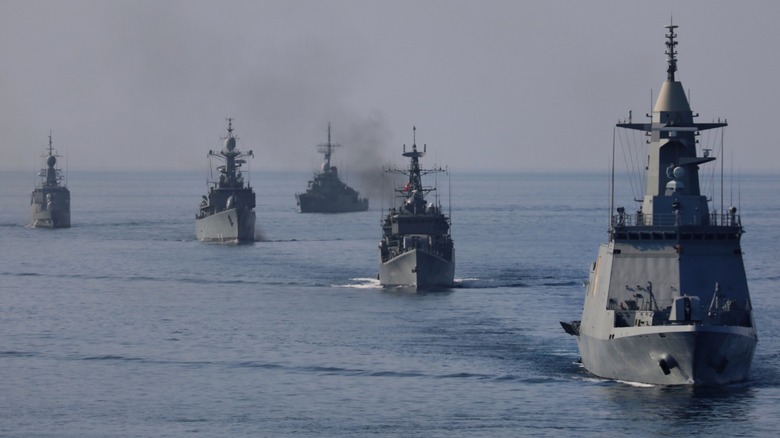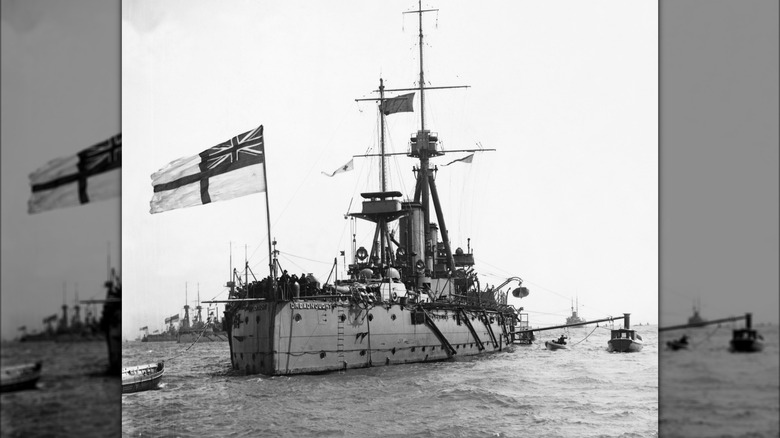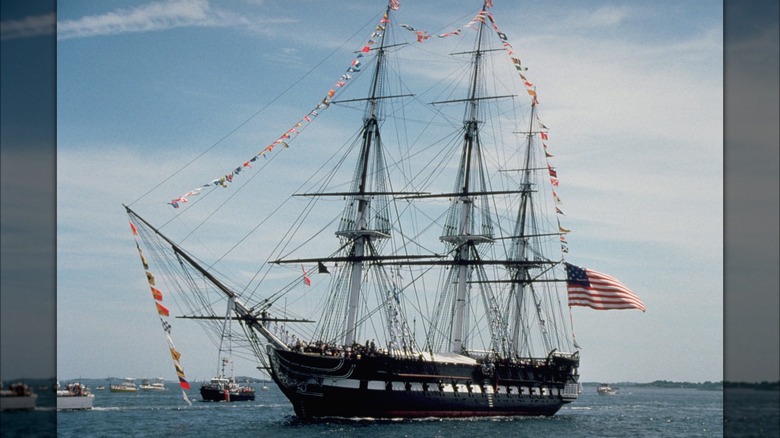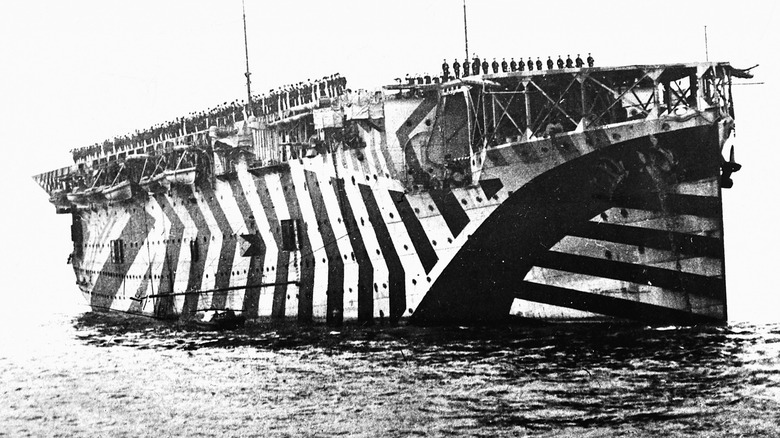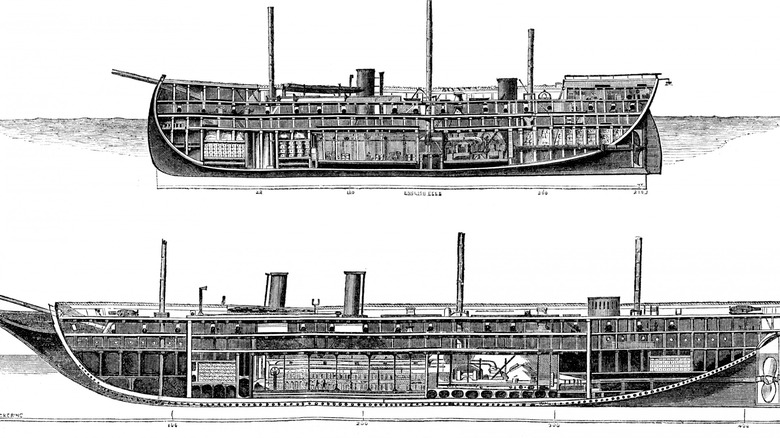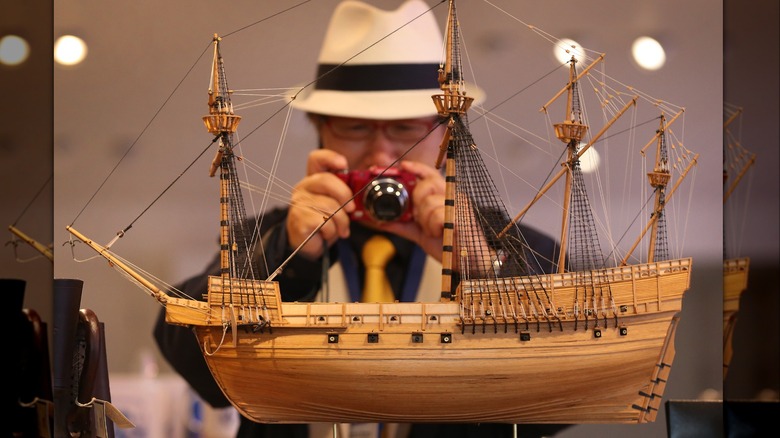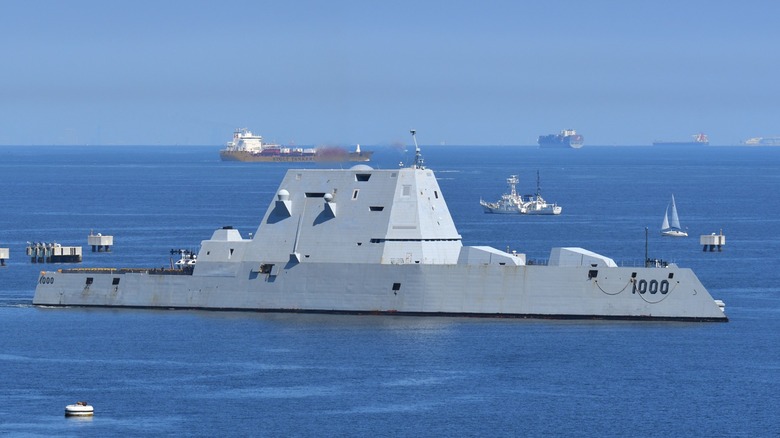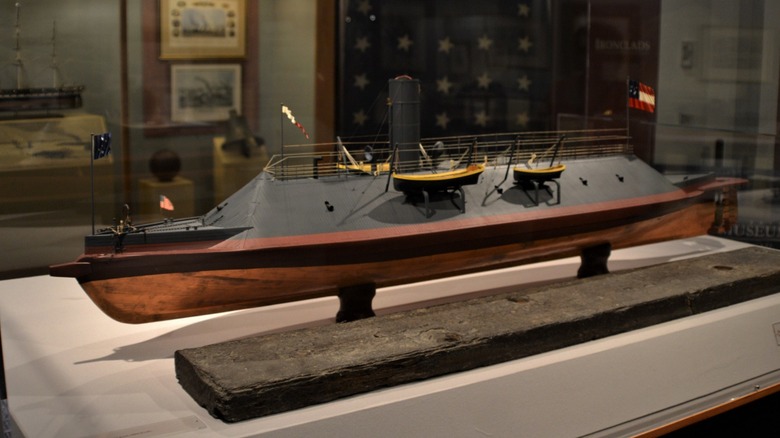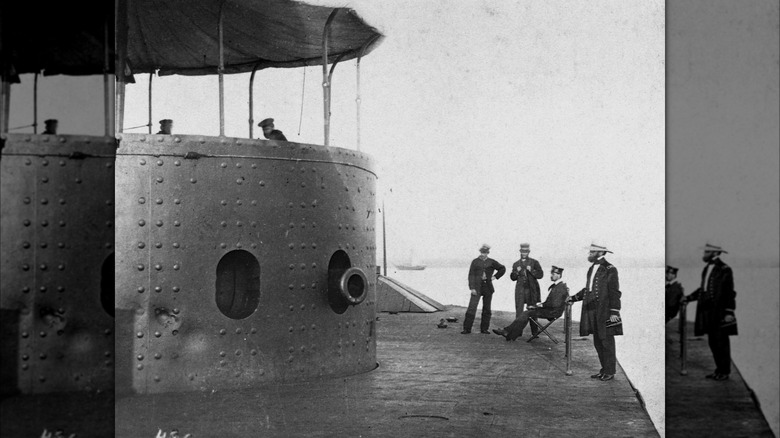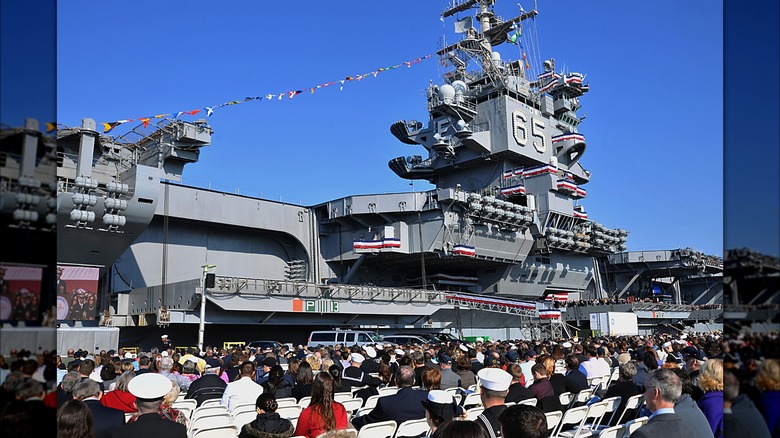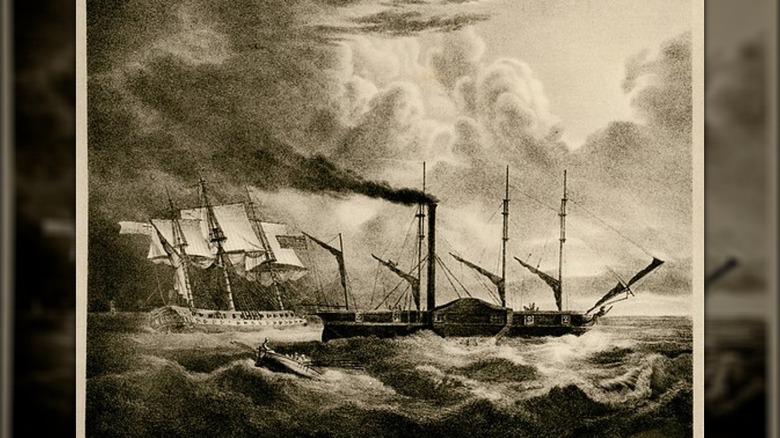10 Revolutionary Warships That Changed Navy Warfare Forever
Naval warfare has been part of human history for as long as humans have taken to the sea. From ancient Rome to the Age of Exploration, boat building and the development of organized naval fleets allowed kingdoms and principalities the opportunity to project power beyond their own shores, often to faraway lands. As naval experience grew and shipbuilding techniques improved, the vessels used to project power grew, and the development of guns and cannons provided the greatest leap toward increasing the power of an individual ship. Along the way, the ships built by the most powerful kingdoms changed from being sailing vessels to warships meant for engaging in battle on the open seas.
As we entered the era of the warship, kingdoms and, later, nation-states built grand and powerful navies to defend territory, engage adversaries, and conquer foreign lands. The first warships, armed with cannons and propelled by the wind, sailed around the globe, collecting riches and increasing the power of their home countries, including England and Spain. Wind propulsion gave way to steam, which would eventually give way to petroleum before nuclear power entered the engine rooms of modern warships.
Furthermore, muzzle-loading brass cannons firing metal balls gave way to modern artillery and the arming of warships with advanced guided missiles now prevalent on the most powerful warships in service. Technical advancements throughout naval history changed the fundamentals of shipbuilding repeatedly. Among the many examples of warships that sparked a revolution in naval technology around the world, these 10 changed warfare on the high seas forever.
HMS Dreadnought
When Britain launched its HMS Dreadnought battleship in 1906, it was hailed for its revolutionary design. What primarily set it apart from its contemporaries was the abundance of oversized guns on board, including a total of 10 BL 12-inch Mark X guns accompanied by an additional 27 12-pounders and five torpedo tubes. It also displaced 18,420 tons with a length of 527 feet, making it one of the largest ships to set sail in its day. The HMS Dreadnought became so significant that Dreadnought became a class, and ships of this period would later be classified as either pre or post-Dreadnought.
In addition to being well-armed, Dreadnought brought about many other innovations. Britain pioneered the triple-expansion steam turbine, which was a smoother engine than the piston engines used on contemporary warships while providing a higher top speed. It allowed the ship to reach 21 knots, making it fast enough to outrun any other warship sailing at the time. The design also placed officers forward in the bridge with enlisted men aft, which reversed traditional ship arrangements and kept them closer to the action for more efficient command of the vessel.
Furthermore, advanced optics provided more accurate targeting from longer distances, providing for a break in naval strategy from more close-range battles to firing long-range with more powerful guns to much more devastating effects. While the HMS Dreadnought played a smaller role than expected in defeating the German Empire during WWI, its role in shaping the future of naval warfare remained much more consequential.
USS Constitution
Built as part of an order of the U.S. Navy's first fleet of ships in 1794, the USS Constitution was laid down in 1797. It was one of six ships built and among the first completed. These frigates combined some of the best ideas in shipbuilding from the French and British to create vessels that would be larger, heavier, and better armed than other ships of their day. Large naval warships had never been built on the territory of the young country, making this an audacious but necessary project ordered by its first president, George Washington.
Joshua Humphreys designed the ship, adding several elements that would make it a formidable foe to its adversaries. Its gun decks carried a total of 24 carronade cannons and 30 long guns to ensure it could deliver a penetrating force. Furthermore, Humphreys wanted to give the ship a fighting chance against attacks on it by providing the hull with multiple layers of white oak and live oak. Live oak is dense, which contributed to the more robust design of this ship compared to other ships of the day.
The ship's success, particularly during the War of 1812, earned it the nickname "Old Ironsides, " as it proved so durable that British cannonballs bounced right off the hull during a battle against Britain's HMS Guerriere. It proved, however, to be so durable and tough that it survived all of its naval engagements so well that it remains the oldest seaworthy ship that continues to sail under its own power today.
HMS Argus
During the period from 1910–1911, American flying pioneer Eugene Ely achieved the first successful take-off and landing of an aircraft to and from a Navy ship. However, he died in 1911, and his work ceased.
From the time of experiments by Ely until WWI was well underway, the British military endeavored to create a workable solution to use a mobile platform for aviation squadrons, particularly to fight back the German Zeppelins once the war had begun. The first efforts included partially converted battlecruisers set as bases for seaplanes, but those often were only good for launching the planes, which had to then be landed on land or ditched over the water. However, by 1918, the Royal Navy had commissioned and put into service the HMS Argus.
The Argus began construction in Scotland as an ocean liner to be delivered to an Italian buyer. However, with the outbreak of war, it was requisitioned by the Royal Navy for use as its first true aircraft carrier. The hull was modified to accept a ship with a hanger and machine works on its main deck with an elevated ship-long platform sitting above the bridge as a runway.
Work continued on the ship throughout the war, but its completion happened only a couple of months before an armistice was signed in 1918. It went on to be used for more than two decades, but the HMS Argus was the first aircraft carrier ever built, with many more to follow for more than a century to come.
La Gloire
Although Britain's Royal Navy was a dominant force upon the seas for centuries, France fielded its own very capable naval force, projecting French power and domination throughout the Western Hemisphere. Furthermore, France was also at the cutting edge of naval technology, building ships of the highest quality. As such, it was France that would be the first to successfully launch a warship reinforced with iron armor plating in 1859. This new vessel, named La Gloire, was the first ocean-going ironclad.
Ironclads were built as a response to the increasing firepower of cannons, as well as the increasing quality of metal foundries during the 19th century. La Gloire was built because the French had previously built gun batteries and towed barges carrying multiple guns with reinforced iron into Crimea and saw the huge advantage of an ironclad then.
A short time after returning from Crimea, France built La Gloire, a steam-powered sailship outfitted with iron armor. This ended up being the first ocean-going ironclad frigate ever built. It began an ironclad race, with Britain following immediately with the HMS Warrior and the American ironclads of the Civil War.
The Mary Rose
Looking far back into the history of seafaring nations and naval battles, many look at one ship built during the reign of Henry VIII as the first warship, a carrack called The Mary Rose. Before the invention of the gun and cannon, boats were used to get soldiers onto land, supported by archers and some use of catapults. While there was direct naval conflict, the ability was limited. As boats grew larger and larger, entering the age of exploration when vast distances could be covered with the support of firearms, the nature of warfare changed.
King Henry grew his fleet of ships from five to 58 by the time of his death, transforming England into a naval power within a generation. One of those ships, The Mary Rose, was ordered built as one of two ships to be added to the fleet, and it became the favorite of King Henry as well as one of the most powerful of its day. The state-of-the-art design made the ship capable of carrying heavy guns, up to eight of them. However, to accommodate these new large guns, it featured gun ports on either side of the ship, a novel feature for the day.
This innovation led to the ability to deliver broadside attacks, firing multiple cannons at another ship on the sea, beginning an era of naval battle that would continue to escalate until the modern day. During its service, The Mary Rose was not the largest ship in the fleet, but it was Henry's favorite and used as its flagship. Furthermore, it was the first with the broadside gun ports that changed naval warfare forever.
USS Zumwalt
The newest destroyer in the U.S. Naval, the USS Zumwalt, fleet first entered service in 2016 after being constructed from 2008 to 2013. As a guided-missile destroyer, its primary purpose is to provide anti-aircraft support to the fleet. At a cost of $4.4 billion, it is the most technologically advanced and one of the most powerful ships in the world.
One of the features that makes the Zumwalt so unique that sets it apart from previous ships is stealth technology built into its construction. At first glance, it is obvious something is different about the Zumwalt, as the traditional shape is absent, as well as the open and visible deck running the length of the ship. While it does have a large landing pad on the rear of the ship, the rest is covered by trapezoidal walls meant to bounce radar signals off the ship without being sent back to the source. The odd angles that are the hallmark of the ship are all present for this function to allow the Zumwalt to enter hostile water undetected beyond the horizon.
The Zumwalt represents the next generation of naval ships for the United States. It has experienced many problems in its short service life, but the Navy is refitting and reworking it to ensure its future within the fleet. Despite these problems, it still possesses a wealth of power and technology that shall shape the way the Navy makes ships for the foreseeable future.
CSS Virginia
During the Civil War, most naval engagements occurred in navigable waterways and littoral waters. The Union enacted a blockade of Southern ports shortly after the declaration of war and gave orders to the bulk of the fleet for this purpose. The Confederates managed to raise a boat sunk by the Union as it destroyed as much as possible of the Naval Yard at Norfolk while retreating from advancing Rebel forces. The sunken boat was the USS Merrimack, which would eventually become the CSS Virginia.
Only the hull could be used, so the Confederates set out to create a new ironclad by placing a huge casemate, a structure built to hold large guns, on top of a new deck constructed on the old hull. The armor used was four inches thick, and the casemate housed 10 guns. While the Merrimack was a sailing ship with steam engine backup, the Virginia used only steam power, which was inadequate for the extremely heavy armor, making it a very slow ship.
It fought in the famous Battle of the Ironclads, which ended with its retreat and eventual destruction. However, this design went on to be used again for other ships on both sides and elsewhere by other navies until the days of the ironclad ended as all-steel ships replaced them. The ironclad did provide a transition from the days of wooden sailing vessels to that of the modern warship.
USS Monitor
A new ship design of the Union set sail to battle the Confederate's CSS Virginia ironclad at the Battle of Hampton Roads in 1862, one of the most famous naval battles of the Civil War.
This new vessel would become the USS Monitor. It was built from the start to be a steam-powered ship with no provision for sails whatsoever. This iron plating could be found from stern to bow, fully encasing the crew within. The shape of the hull, along with the extreme weight, caused it to sit very low in the water, leaving only a few feet above the water line, making it a difficult target for the drudge weapons of the day.
However, the most unique and clever feature was a rotating turret for the guns. With a pair of guns installed in the turret, a separate steam engine powered the mechanism to rotate it, making it possible to aim at targets without turning the entire ship. This made it possible to shoot, reload, and fire again much more rapidly than anything else at the time, even with a fraction of guns on board.
The USS Monitor was successful in its battle with the ironclad CSS Virginia, even though both ships left the battle intact. It did prevent the Virginia from destroying all the Union ships at Hampton Roads, which was its objective. The success of this USS Monitor led to other ships of the same design being built as a new class of boats, all called monitors. Monitors only lasted another 10 or 20 years in use, but the ingenious turret design continues in use today.
USS Enterprise
For the eighth time in U.S. history, a ship was christened USS Enterprise in 1961 when, for the first time, the U.S. launched a Navy ship requiring a refueling only once every 10 years. Rather than filling it up with coal or diesel, this one ran on uranium as the first nuclear-powered aircraft carrier of the American fleet. In its first deployment, it was sent to Cuba to enact a shipping embargo during the Cuban Missile Crisis and then continued to serve until being decommissioned in 2017.
When it was built, the Enterprise was a technological marvel that signaled a seismic shift in the way American carriers would be built from then on. Using nuclear power, an aircraft carrier can remain deployed for months on end, only needing to dock to resupply food, sundries, and other various consumables needed to keep the ship and crew running.
Furthermore, its reactors generated enough power that it was capable of outrunning a destroyer escort during its first sea trials. The shift to nuclear power was a development with significance for the Navy that is hard to understate. The success of this aircraft carrier proved the concept of nuclear power, and it has continued to power every American carrier ever since.
Karteria
Practical steam power was first developed in the 1700s and first adapted to boats after 1800. The early steam engines found on ships were crude, inefficient, and underpowered but provided a huge step in the advancement of travel by sea. Ships initially only used steam engines as alternative power, with sails continuing to be the primary propulsion. The manufacture of steam engines and steamships was dominated by England for many years, which led to Greece ordering a warship, which was completed in 1826, for its navy, which would be called Karteria.
This ship, like others built in the era, was a paddle steamer that held two engines in its hull, each powering one wheel on either the port or starboard side. While the ship sailed well, the engines could be problematic and gave the crew much trouble. However, when it was underway, the paddles gave the ship excellent maneuverability. On calm water, the paddles could get the boat up to 6 knots.
While Karteria was not the only ship of this nature at the time, it would be the first to engage in battle. The Greek War of Independence began in 1821 as the Greeks sought to break off from the Ottoman Empire. Steam power of the ship was meant to be used during a battle, allowing the sailors to maneuver without relying on unpredictable weather patterns. As a result, the Greeks battled the Turks in multiple engagements successfully, laying siege to Ottoman ships and proving the value of steam-powered naval warships.
